Rochester, New York, United States
Architect: Donald Ross (1923), Gil Hanse (2004 - Restoration)
6,584 Yards, Par-70
Rating/Slope: 73.3/135
My Quick Review: In a City full of Donald Ross golf courses, CC of Rochester is the best.
In a city that receives far from enough attention for its quality of golf, CC of Rochester may be the best of the bunch. In the early 2000s Gil Hanse was brought in to restore the golf course and his work is exceptionally well done. For the GCA nerd, CC of Rochester is a treat. The routing is clever, making maximum use of the terrain on the western portion of the property. Bunkers are simple, strategic and varied; everything from top shot bunkers, penal bunkering, staggered bunkers, pot bunkers and bunkers so deep you may never get out!
I have included three aerials, one from 1952, one from 2002 and one from 2006 (to show the work done in the Hanse restoration).
It seems that some time between 1952 and 1969 three holes were lost on the eastern portion of the property to build a driving range, and three holes were added over some of the most dramatic terrain on the course on the western portion. In a million years I could not have picked out the three new holes as non-Ross holes. They are exceptionally well done, and dare I say, among the best holes on the course. 2 of the 3 holes lost from the original course can still be played in modified form as practice holes.
1952

2002

2006

Scorecard Information

The view from the first tee lets one know that this is going to be a fun day. A short par-4 played uphill and to a fairway with plenty of leftward tilt. Staggered bunkering here is very effective and makes the golfer start thinking from the get-go.

While some may choose to thread the needle, laying back to 120 yards will leave the golfer with a much wider landing area.

Like many approaches at CCR, the approach to the 1st begs for the ground game as a running shot from right-to-left will work well into this punchbowl green.

Effective use of the top-shot bunker at the mid-length par-5 2nd, which plays downhill and requires a tee shot flirting with the bunkering to stay in this tilted fairway.

A creek (which will be seen time and again) cuts across the 2nd some 30 yards short of the green, demanding an aerial approach.

An excellent short-4 at the 3rd played over some severe terrain. Again the needle can be threaded though many will be well-served playing short of the trouble, though the approach will be completely blind from there.

The green at the 3rd is large and severely undulating. Again, the running approach is an option.

The 4th is a monstrous 227 yard par-3 to a seemingly (and actually) tiny green.
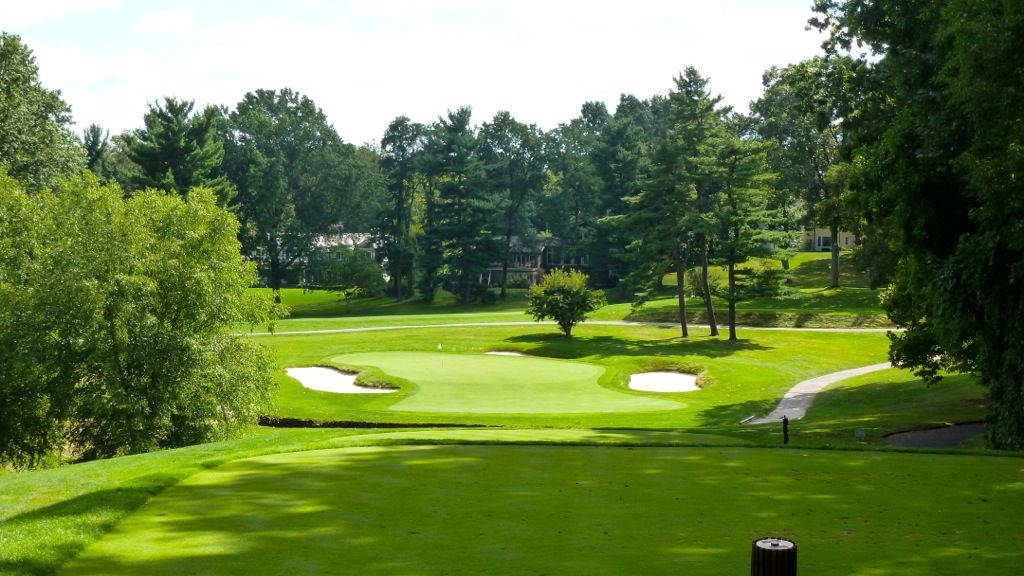
Blind from the tee is a creek cutting across the 4th.

The green slides around to the left offering a very difficult back-pin position, especially because of the knob that protects that side of the green.

The first of the non-Ross holes and it's a good one; the 5th is my favorite hole on the course. The tee shot is near completely blind (time to start getting used to that) and played to a fairway that tilts sharply to the right down to the creek. The golfer's first clear look at this snaking par-4.

If the golfer manages to keep his ball on the left portion of the fairway he has a much preferred angle of approach into the green.

As seen from the 6th tee, the 5th green is protected short and left by a fairway run-off area that will reject slightly mis-played shots.

Another blind tee shot gives way to a fairway that moves right but tilts left and tumbles down to a lower landing area that can only be reached by the bombers.


As seen from behind, the approach to the 6th is played over a severe false-front to a very narrow and wide green that unlike many of the other greens at CCR has back-to-front tilt and not much else.
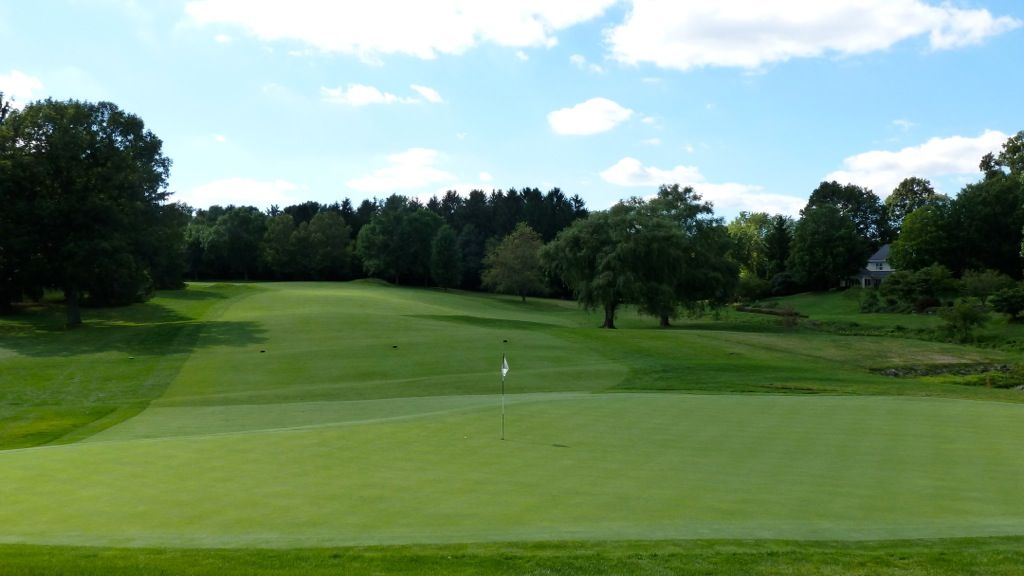
The 7th is a pretty par-3 with the creek winding along the left side of the hole (though not really in play).

The 8th is the first of a string of unforgiving par-4s. Another uphill tee shot, this one played to a fairway with a trio of bunkers set into the hill and moving diagonally across the fairway.

Another approach where a left-moving ground approach is ideal. Missing in the right bunker is forgivable (and recoverable) but the bunker on the left is plain nasty.

Something about the 9th feels off to me, and it is clear that the current hole is not as it was originally laid out.
Only the peak of this deep fairway bunker can be seen on this mostly blind tee shot.
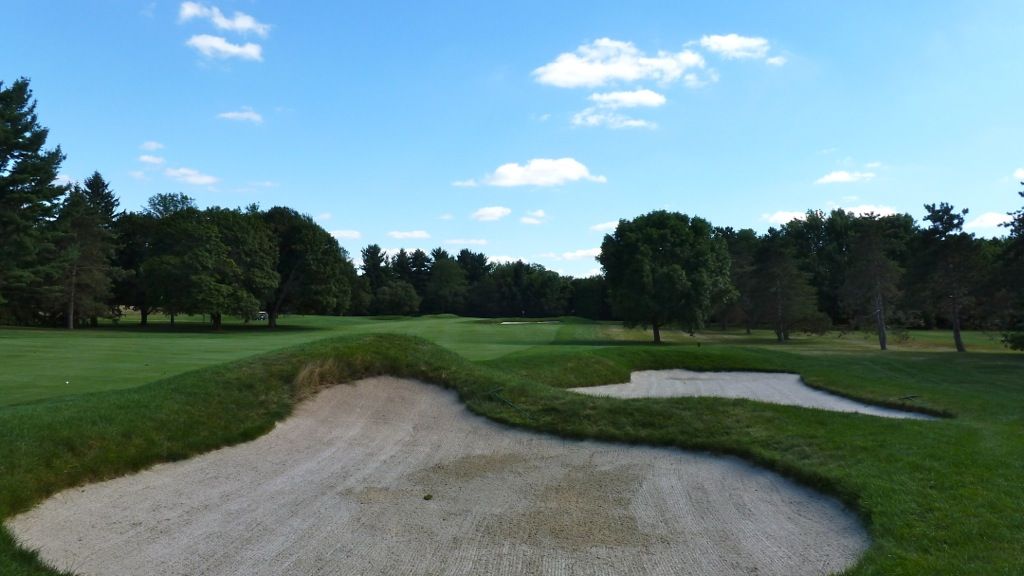
Though this bunker makes for an intimidating approach...

There is quite a bit of room over it and a clever golfer can still have his ball land some 30 yards short of the green.

The 10th is a wild and massive par-5 at 570 yards. The land first moves left and so does the hole, requiring the golfer to flirt with these bunkers to find the fairway.

The land on the second half of the hole moves right. A nest of bunkers on the left 120-150 yards short of the green must be avoided to leave this approach into the left-to-right sloped 10th green.
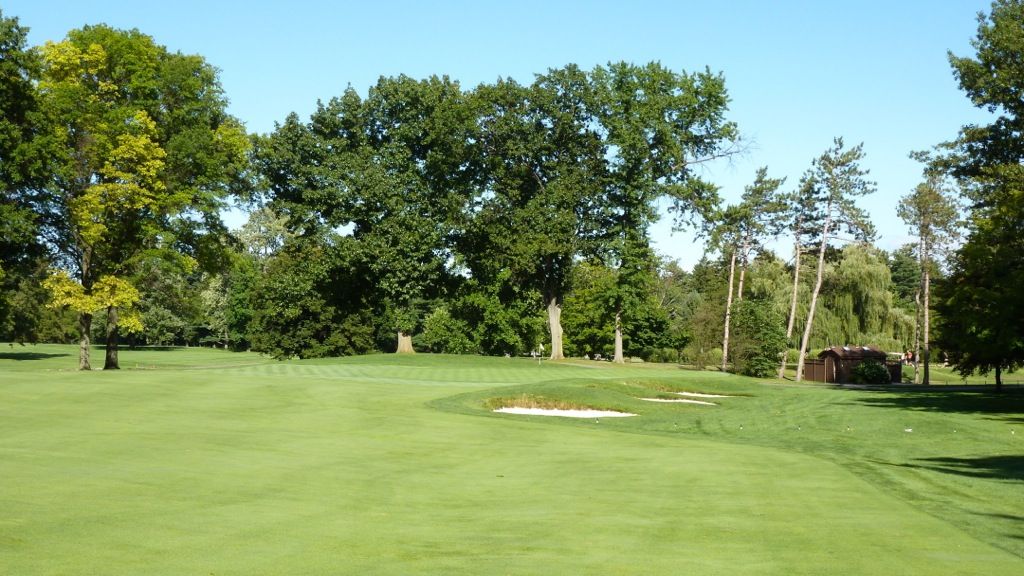
The 11th is a simple par-3.
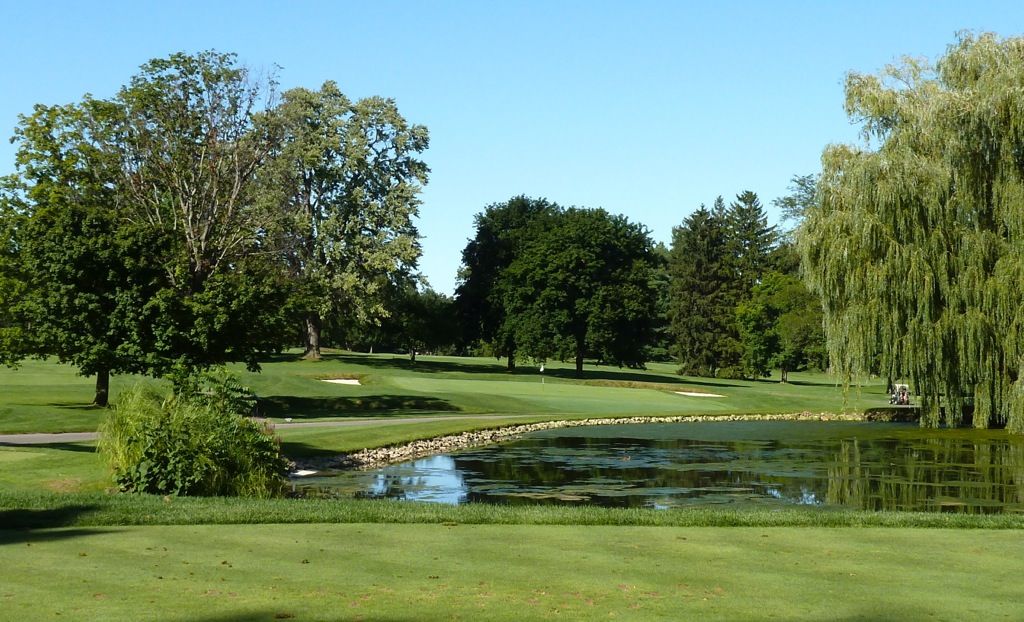
The 12th and 13th are routed back-and-forth, though somehow both have uphill and partially blind tee shots. At the 12th the land tilts to the right and the golfer would be well-served to run his ball onto the green from the left.

This kicker left of the green can be used to help nudge the ball onto the green, though the golfer that misses left is in trouble.
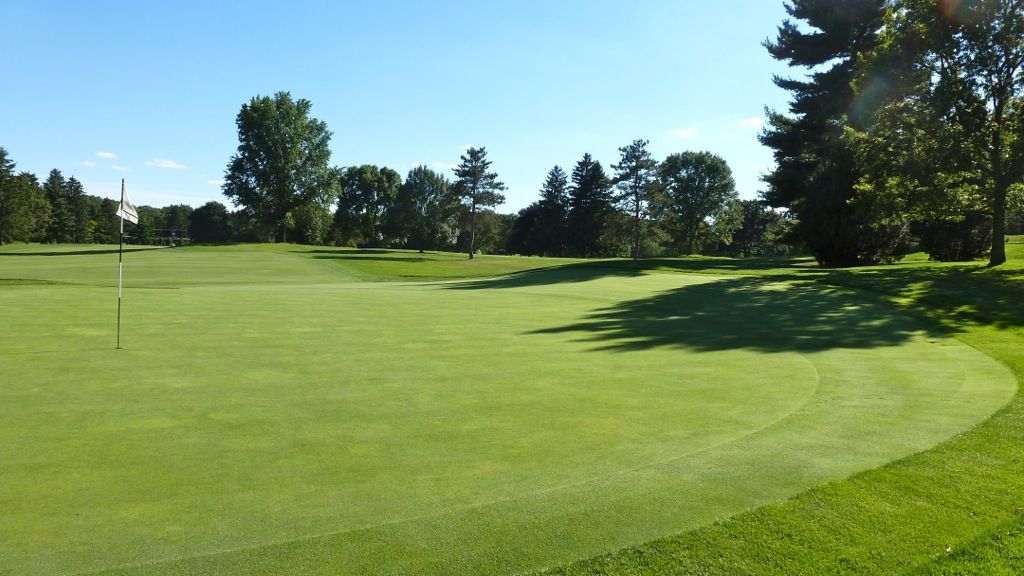
The approach to the very long par-4 13th, like at the 9th, is played over a cleverly placed cross-bunker.

The 181 yard par-3 14th is a wonderful golf hole. A cross-bunker messes with the golfer's depth perception, the last thing the golfer needs with the trouble lurking long...
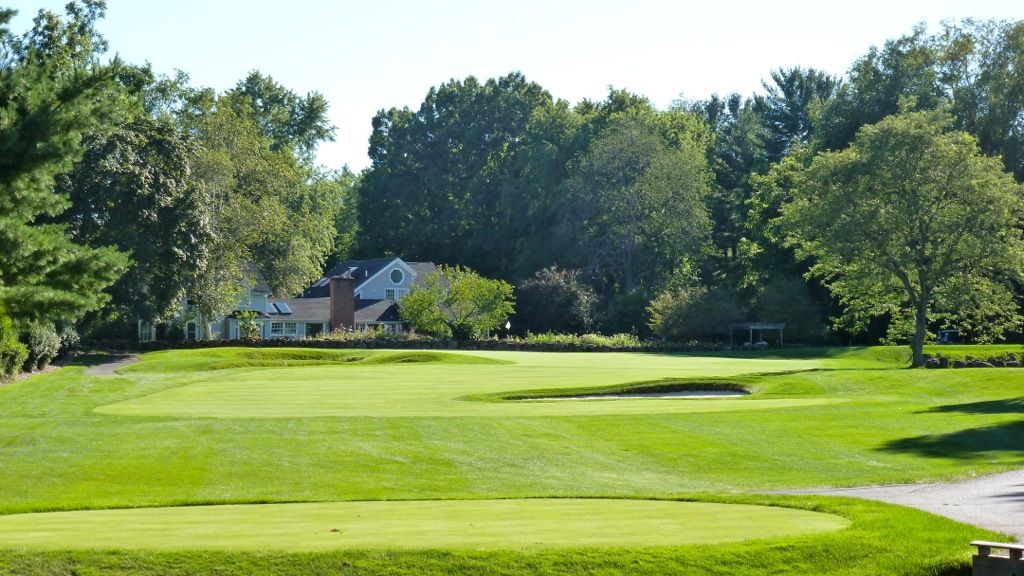
in the form of a road, a rock wall and out-of-bounds!

Oh, and there's a nest of bunkers left and water to the right!

The first real chance at birdie in a long while, the 15th is a very short and reachable par-5. The LZ is pinched at about 260 yards from the back tee by some of the deepest fairway bunkers on the golf course. From what I can tell, all of the bunkers along the left side of this hole were a part of the Hanse restoration.

Though many golfers will be tempted to reach this hole in two, out-of-bounds to the left and this dropoff/bunkering combo right of the green are a near perfect penalty for a mis-played shot.


A very interesting green. Narrow in the front and widening in the rear. Huge slopes at the back portion of the green will contain any shots just a little long and will severely penalize any that end up over the green.

It is some 150 yards from the 15th green to the 16th tee. Along the way the golfer passes the graveyard of what I can only presume was once the 16th. The current 16th is a Ross 'short' though at 169 yards it really isn't that short! There is no room to miss here as the small green is protected by a false-front, bunkers right, left and back-left and a steep fall-off over the green.

The 17th is a simple mid-length par-4. It seems the original tee was located much nearer the road that separates the current 16th and 17th holes and losing a tee shot over the boundary must have been a real risk.

Playing parallel to the 17th the 18th is a dogleg par-4 that returns the golfer to the clubhouse. Once again, a false-front catch shots just short though the ground-game option is available and perhaps preferred.


The 18th green connects with the practice green and is the most rippled greens (small internal contours) on the course.


No comments:
Post a Comment